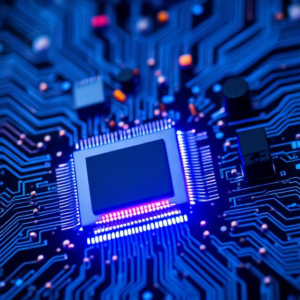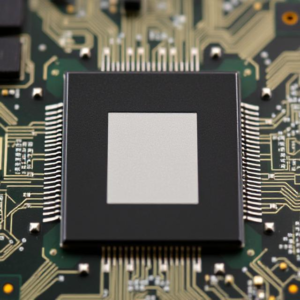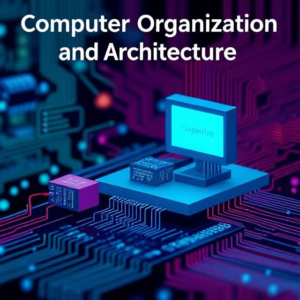Both microprocessors and microcontrollers play vital roles in modern technology, with microprocessors powering complex systems and microcontrollers controlling everyday devices.
The Microprocessor is often considered the “brain” of a general-purpose computer. It performs tasks such as fetching instructions from memory, decoding them, and executing them to complete a process. Microprocessors are found in devices that require complex computations and multitasking, such as:
- Desktop computers: Where the microprocessor runs the operating system and applications.
- Laptops and smartphones: For computing power and running apps.
- Gaming consoles: To manage game processing and interactions.

Parts of a Microprocessor:
- ALU (Arithmetic and Logic Unit): It performs mathematical and logical operations.
- Control Unit (CU): It fetches and decodes instructions and manages the operation of other components.
The Microcontrollers are designed to control specific tasks in embedded systems. They are self-contained systems, meaning they don’t need external components to function (other than power and input/output devices). Microcontrollers are widely used in everyday devices that don’t require complex operations, such as:
- Home appliances: Like microwave ovens, refrigerators, and washing machines.
- Cars: Microcontrollers manage functions like power windows, airbag systems, and engine control.
- Toys and gadgets: Used in toys, digital clocks, remote controls, and fitness trackers.
Parts of a Microcontroller:
- CPU (Central Processing Unit): Executes the instructions.
- Memory: Includes RAM(temporary storage for data) and ROM (permanent storage for the program).
- I/O Ports: These ports allow the microcontroller to communicate with sensors, actuators, and other devices.
- Timers and Counters: Used for precise time delays and measurements, often for controlling processes like timing in a microwave or washing machine.
Microcontroller: A microcontroller is like a specialized worker in a factory. This worker is assigned a specific task, like assembling a toy or controlling a machine. The worker is self-sufficient, with all the tools needed for the job built into their workstation (just like how the microcontroller has everything on a single chip).
Think of a microprocessor like a general-purpose worker in an office. This worker is capable of doing many tasks, such as answering emails, writing reports, or attending meetings. However, the worker needs other people (like a printer, a computer, or storage) to help complete the job.











